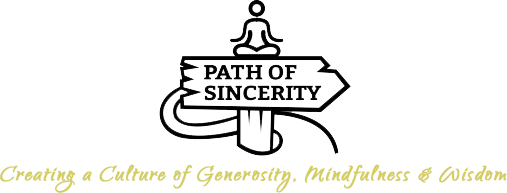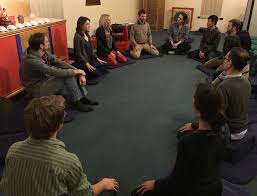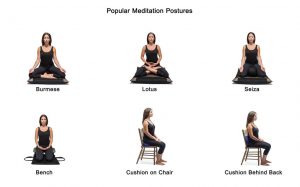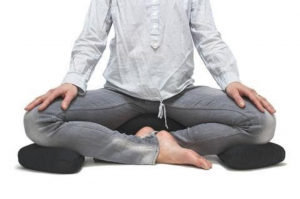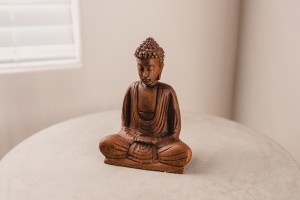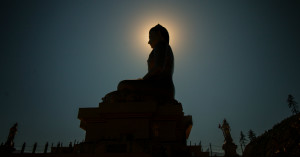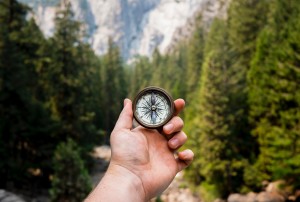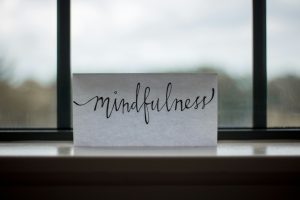
The following reflection originally appeared in the newsletter I sent out on December 29th, 2024.
Feel free to read just the bold words and skip the rest, maybe even only reading the sections that interest you.
————–
Introducing Daily Life Mindfulness
This past week, I visited my family of origin in Wisconsin for Christmas
In contrast to my typical daily life routine, where I have lots of duties and need to do quite a bit of critical thinking, over there, on “vacation,” I had very little that I needed to do. I largely put aside work and managing my life situation, and just let myself slip into the flow of the days.
One thing that piqued my interest was where my mind would go in all the restful moments. When just sitting on the recliner by the fire. When having a casual conversation. When playing a slow-moving board game. When walking around the neighborhood. In all of this, observing the mind without judgment. Just a gentle curiosity.
What I noticed is that it tends to go one of four places:
- Thinking, usually revolving around “the story of me”
- External stimuli, like checking my phone, reading something, or doing a puzzle.
- A dull sleepy state
- Present moment awareness*, like feeling my body, hearing sounds, or resting in open awareness of the whole flow
The first two are basically two sides of the same coin — the mind that seeks stimulation, whether internally via thought or externally via some activity. They are both ways we run from the present moment. The first one is sometimes referred to by neuroscientists as the Default Mode Network; that is, the place our mind defaults to when we don’t need to exercise a lot of brain power.
In turn, a major thrust of long-term meditation practice is to shift our default from stimulation-seeking to present moment awareness, not just during formal meditation, but all across the day.
Today’s reflection is an exploration of how & why to do this.
*Note: I use the terms mindfulness, awareness, presence, and present moment awareness as synonyms.
Low Brain Power Activities
If you considered all of your life’s activities, you could roughly divide them into three categories:
- Low brain power, like laying in bed, going for a walk, exercising, showering, or washing dishes
- Medium brain power, like listening to music or a not-too-complex audiobook, cooking a multi-part meal, city driving, or writing simple emails
- High brain power, like doing any kind of reading, writing, listening, or talking that relates to something complex or nuanced
It’s helpful to begin by getting curious about the low brain power activities — where does your mind go when you do these things?
For example, if you’re standing in line at the store, waiting in the doctor’s office, or sitting in a traffic jam, does your mind just rest in present moment awareness, noticing the pressure of the feet on the ground, the tingle of the body, the flow of sounds, all the lights and colors, and just letting the urges and thoughts pass through like bird songs chirping in the background.
Or, does it spin round and round in thinking, like rehearsing conversations, managing your work, planning the day, considering your finances, worrying, regretting, complaining, and on and on?
Or, does it follow the urge to check your phone, put on a podcast, call someone, or grab some reading material?
Chances are if you aren’t intentional about it, you’ll do anything but be present moment aware. Just notice this! No judgment. No problem. Just a gentle curiosity.
The more we get curious about these low brain power moments, we start to see that the curiosity itself brings awareness.
Rather than cruising through the day on autopilot, we hold the intention to bring presence to these restful moments. When we inevitably notice ourselves spinning in thought, we kindly say, “hello thinking, no thank you,” and soften back into awareness. When we notice the urge to grab our phone, we kindly say, “hello craving, no thank you,” and relax back into awareness.
If we do say that no thank you, there will likely be an uncomfortable feeling that arises. A sense of agitation, ickyness, or restlessness. This is a great sign! It’s the meditator’s equivalent of the “burn” a runner might feel on mile five. We learn to love this feeling. It means that spiritual growth is happening — that rather than just blindly chasing stimulation, we’re learning how to be with what is in a relaxed open way.
Another way to put all this is that by being more intentional with our low brain power time, we’re re-programming the “default” of our mind. One teacher put this simple question to me, “is your center of gravity found in awareness or thinking?” Considering our answer as more of a spectrum than a binary, we can get a good sense of how free we are by placing ourselves on that spectrum.
Formal Meditation
In the above section, I suggested getting curious about where our mind goes during low brain power activities, all across the day.
However, it’s hard to do this without a daily formal meditation practice; that is, a set period of time where our singular objective is to be relaxed and aware. It’s a practice of seeing all the random thoughts and urges, and saying, “hello, but no thank you.”
Ultimately, the skill that we transfer into our life isn’t the ability to focus so intensely that we can block out all our thoughts, urges, and feelings, but rather, it’s the ability to calmly see them and not get entangled; to let them pass on through like birds chirping in the background.
The more we can do this in the very low brain power environment of “formal meditation,” we know intuitively that we can do it all day long. We start to understand that the low, medium, and high brain power distinctions are completely arbitrary. In every moment, there is just awareness and objects of awareness.
This is similar to how if you went to cooking school and made lots of great dishes during class, it’s not like you have to be in class to cook well. The idea is that you learn the underlying principles so you can go back to your own kitchen with a deeper, intuitive understanding of what makes a tasty dish.
Of course, as you take this skill of present moment awareness off your meditation cushion and into your life, noticing the senses, and kindly saying “no thank you” to the compulsive thoughts and urges, you won’t be perfect, but that’s okay.
Again, we’re slowly re-programming the default of our mind. Like the earth rotating around the sun, it goes slowly, but if you’re patient, it does go.
Back to Vacation
Here’s a simple yet profound teaching: awareness is always possible right now, but it’s much easier to realize that with supportive conditions. Some people focus too much on the always possible, and then aren’t actually very aware because they don’t bother to take any precautions. Other people focus too much on seeking supportive conditions, and miss the fact that awareness is right here, not in the future after they’ve done X, Y, and Z.
The profundity of that teaching is being able to walk the middle way between these two pitfalls of (1) not enough effort and (2) too much managing.
For example, it’s absolutely 100% possible to be aware while thinking, using your smartphone, or engaging in high-brain power activities. However, until we have quite a lot of skill and/or momentum in our practice, we’re probably not going to be very aware during those activities with any kind of consistency. They are like going for a 13-mile run — not many people could do that tomorrow, but with sufficient training, most people could do it in a year.
What I have seen actually work for people to shift their default mode is to start with focusing on the places where it’s easiest to be aware; that is, low brain power activities. As above, this starts with a daily formal meditation practice. It branches out into all the restful activities of our day, and slowly creeps into higher and higher brain power tasks.
Furthermore, the shifts become entrenched more deeply through retreats, a simple lifestyle, and filling our days with supports, like reading reflections like this one or going to spiritual community gatherings.
In practice, the shifts usually aren’t so dramatic, like from 0 percent aware one day to 100 percent aware the next, but rather move 1 percentage point at a time. Although, of course, while they usually aren’t so dramatic, sometimes they are. Medium-to-large insights do come as a product of intentional practice and can radically shake up our mind’s center of gravity.
Anyhow, on my Wisconsin vacation, I took all the high brain power tasks away from myself, which made it considerably easier to be aware all day long. My awareness wasn’t perfectly continuous by any means, but there was a noticeably stronger stream of awareness than normal. Now, back into the land of writing essays like this and managing all sorts of life details, that extra momentum is still here. The awareness comes a little more naturally.
This is to say that all periods of heightened awareness create the conditions for future awareness — like the “snowball effect,” as we keep at it year after year, all the moments add up to something more than we could ever imagine.
You Can Still Do Things
It’s worth stating explicitly that being present moment aware in your daily life doesn’t mean you can’t do things, like go on your smartphone, watch movies, read books, have conversations, play a board game, or think about everything under the sun.
The idea is that we’re learning to live our lives from the seat of wisdom, as opposed to the seat of reactivity and autopilot. In turn, if there’s something important to check on your phone or think about, great, do it! If it would be fun to play a game with your kids or friends, wonderful, do it! If there’s a podcast or music or dharma talk you want to listen to, fantastic, do it!
In other words, with the tasks we engage with, we more and more do them because our intuitive wisdom says it’s a good idea, as opposed to just impulsively seeking stimulation, internally or externally. Of course, look carefully. What I’ve noticed is that at least 90% of my thoughts and urges, if not more, are just autopilot at work.
As for how awareness fits into the picture, imagine a friend sent you to find a screwdriver in the tools drawer of their basement. If you didn’t turn the lights on, it would be very difficult to find that screwdriver, but with them turned on, you’d probably find it pretty easily.
Similarly, awareness is like turning the lights on in our mind. It shows us our thinking, mindstates, and urges. It cues us into what’s truly important and what’s just noise. It gives us the opportunity to pause before taking action. In turn, the more awareness, the more our intuitive wisdom has a chance to grow. Slowly slowly, we gain a deeper capacity to kindly say, “no thank you,” and relax into a gentle, calm presence whether we’re washing the dishes, reading a book, or writing a dissertation.
Conclusion
If you want to play with this, you could keep it simple and investigate the question, “where does my mind go in its restful moments?”
However, if you want something more concrete, I suggest picking one low brain power activity that you do every day, like showering, dishwashing, or walking the dog. For one week, set a clear resolution to do that task with present moment awareness. If you’re not sure how to do that, put away all media and pick one sense, like body or sound, and try to stay connected to that while you do the activity.
Of course, you’ll inevitably drift off into thought or feel urges to chase external stimuli — maybe only catching yourself five minutes down the rabbit hole. No problem. No judgment. Whenever you notice this, just relax, soften, and return to present moment awareness. The shifting of the default is a marathon, not a sprint.
Once you have a feel for being aware during that activity, you could expand it and add a second activity. Or, perhaps, try what I do, and treat all non-high brain power periods as meditation time.
The more you take all this to heart, you’ll notice that you live more and more “with the lights on” — how wonderful it is to have the light of awareness shining within and without!
p.s. are you aware right now?
—————
If you would like to get a monthly’ish email with reflections like this one, along with some event updates, sign up here for the newsletter.
